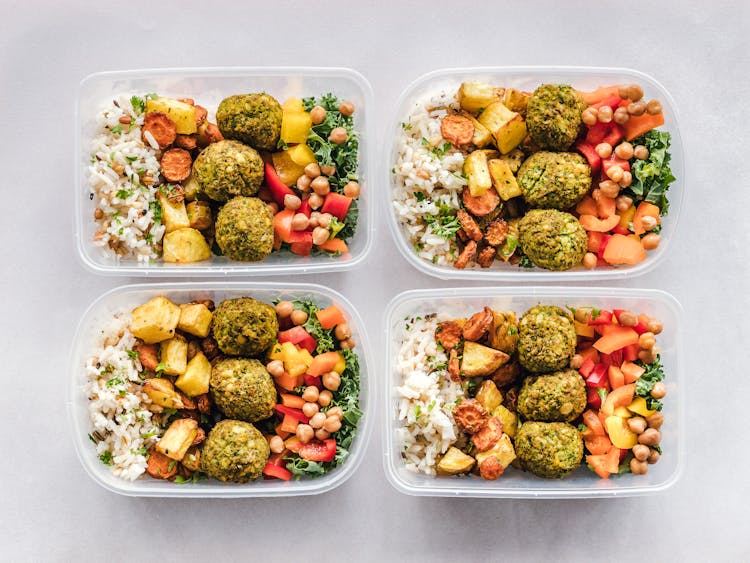Table of Contents
TLDR Summary:
- 🍽️ Plan meals in advance to avoid impulsive food choices.
- 🥦 Incorporate variety with nutrient-dense foods for overall health.
- 💪 Ensure balance among proteins, carbs, and healthy fats in every meal.
- 🌈 Include colorful, flavorful ingredients to make meals enjoyable.
- 💧 Don't forget to stay hydrated and prioritize whole foods.
Creating a balanced meal plan involves several key steps to ensure that you are consuming a variety of nutrient-dense foods. One of the most effective strategies for promoting mindfulness in your eating habits is through meal planning. This process doesn't merely require a list of foods; it's about establishing a routine that leads you toward healthier choices. By planning your meals in advance, you're not only avoiding the pitfall of last-minute unhealthy decisions, but you're also ensuring you meet your nutritional needs. This proactive approach to creating a balanced meal plan fosters greater awareness of what you consume, leading to improved well-being.
Incorporate a range of foods from various groups. A well-balanced meal should include fruits, vegetables, grains, lean proteins, and healthy fats. Emphasizing nutrient-dense foods in your meals maximizes health benefits while reducing calorie intake. For instance, rather than simply filling your plate with pasta, consider enhancing it with grilled chicken, fresh spinach, tomatoes, and a drizzle of olive oil. This will increase vitamins, minerals, and protein, while keeping your meal deliciously satisfying. By diversifying your meals, you open the door to a wide array of nutrients.
The golden rule in meal planning is simple: ensure a mix of proteins, carbohydrates, and healthy fats in each meal. Proteins are crucial for building and repairing tissues, carbs fuel your daily activities, and healthy fats promote heart health and support nutrient absorption. Examples of balanced meals include a bowl of quinoa topped with black beans, diced bell peppers, and avocado, or a plate of baked salmon with steamed broccoli and brown rice. When you consciously think about the macro and micronutrient compositions of your meals, you are practicing the art of mindful eating.
Emphasizing Whole Foods: The Core of a Balanced Diet
Building a meal plan around whole foods is essential. Whole foods, such as fruits, vegetables, whole grains, and lean proteins, are rich in nutrients and fiber. They should be the primary focus of your meal planning to ensure that you are getting all the necessary nutrients without additives and preservatives. Additionally, consuming whole foods can lead to better digestion and help in weight management. When crafting your weekly meals, consider incorporating foods that are less processed, making your meals not only tastier but also healthier.
To keep your meals exciting, adding color and flavor is vital. Many fruits and vegetables come in various hues, each representing different phytonutrients. Including different vegetables, fruits, and herbs enhances the visual appeal and builds flavor profiles, making your meals enjoyable. A colorful plate often indicates a balance of nutrients. For instance, a salad with kale, shredded carrots, beets, and sunflower seeds, topped with a zesty dressing will not only be beautiful but packed full of nutrients. Experimenting with spices and herbs can further elevate your meals; a simple sprinkle of rosemary or a dash of cumin can change an entire dish.
Mindful Eating and Portion Control: A Recipe for Success
Portion sizes play a significant role in meal planning, as they help you monitor calorie intake and meet your nutritional goals. Using standard serving sizes and practicing portion control are effective methods for maintaining a healthy weight and overall well-being. One practical tip is to use smaller plates, which can trick your mind into thinking you are eating more. Pay attention to how your body feels; eat until you're satisfied, not overly full. Consider using the plate method to divide your plate into portions for fruits, vegetables, proteins, and grains to help visualize a balanced meal.
Another crucial element in mindful eating is hydration. Water is essential for supporting digestion and nutrient absorption. Drinking plenty of water throughout the day can assist in regulating appetite, as thirst is often mistaken for hunger. Aim to drink water before meals and throughout the day to stay hydrated. Incorporating herbal teas or infused water with fruits can be an enjoyable way to increase fluid intake. Remember, maintaining hydration has a significant impact on your overall health.
Exploring Delicious and Healthy Recipe Options
The formulation of healthy recipes is a thoughtful process that involves using nutrient-dense ingredients and advantageous cooking methods. Recipes like scrambled eggs with spinach served with whole grain toast can provide a perfect morning boost. Similarly, a vegetarian burrito bowl featuring brown rice, black beans, grilled vegetables, and a dollop of guacamole can serve not only as a delightful dinner but also as leftovers for lunch. Keeping meals wholesome doesn't mean sacrificing flavor; rather, it encourages combining simple ingredients into wholesome meals.
Meal prepping can aid tremendously in managing your dietary goals. Books like Meal Prep for Weight Loss: Weekly Plans and Recipes to Lose Weight the Healthy Way offer organized plans to simplify this process, taking the guesswork out of daily meals and promoting consistency. Additionally, utilizing meal planners like The Skinnytaste Ultimate Meal Planner can help structure your grocery shopping and preparation, ensuring you're on the right track towards a balanced diet.
What are some practical tips for meal planning?
How can I ensure my meal plans are balanced?
Key Takeaways:
- ✅ Proper planning is essential for a balanced diet.
- ✅ Variety and nutrient density are crucial for health.
- ✅ Mindful eating promotes better food choices.
- ✅ Portion control helps maintain a healthy weight.
- ✅ Hydration is key to overall wellness.

Discover more about topic
Navigation
Latest Posts
Notable Water Damage Restoration Providers
Choosing the Right Water Damage Restoration Company
Selecting Safe Cleaning Agents for Household Use